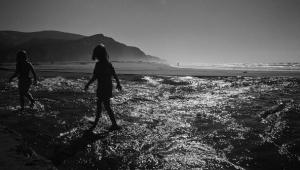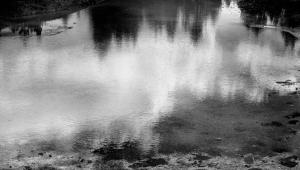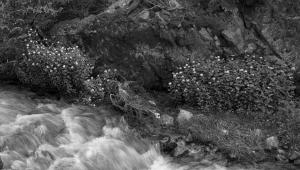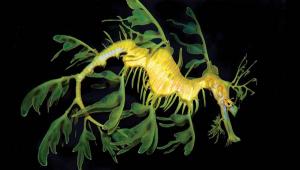The “Other” Magical Hour
The “Other” Magical Hour
Blue Light Moods
by Lindsay Adler
Most photographers are familiar with the “golden hour” after sunrise or before sunset when the light is rich, warm, and stunning for photographs. But many photographers don’t realize that there is another magical time—the blue hour. Twilight creates a stunning phenomenon when the sky records on camera as a deep and saturated blue. In the time after sunset and before total darkness you can capture this stunning effect that adds drama and impact to your images.
 #1 |
|
 #2 |
|
|
After sunset don’t pack up your equipment…wait. Some of the best photo opportunities may be yet to come. Even when the colors of sunset fade out of the sky, the richest color can be the “blue light” that appears just before the sky darkens completely.
This effect is not immediately after sunset. You must wait for the brightness to go out of the sky—this allows the blue to be saturated and not washed out by fading daylight. When you think its dark enough, wait. The full effect is not perceptible to the eye…generally after light is gone from the horizon you will get the richest blue. When properly exposed, the sky will become a lighter and richer blue.
 #3 |
 #4 |
|
|
||
What is great about blue light is that even if you have a boring sunset or no sunset at all (overcast skies), you will still have stunning blue light in the sky. You should also be aware that the blue hour comes and goes quickly. Blue hour is not an hour, it is much shorter. It only lasts about 20 minutes or so at its richest.
 |
|
|
Even before sunset you should have an idea of where you want your exposure to be composed. After you capture your sunset images, compose your blue light images and wait. The rich blue sky will first appear opposite of where the sun set and then will slowly grow across the sky and cover the sky above where the sun set (as it gets darker).
 |
|
|
If you are uncertain about when blue light is, you can check the website www.bluhour.com. In this website you can put in your location (city, state, country) and it will tell you the exact duration of blue hour light. You can even access this information from your mobile phone when you are on the go. When you go out and photograph blue light a few times this information will be unnecessary, because you will be comfortable with the best times to achieve this effect.
Technique
You will want to photograph at a low ISO (100-200) in order to reduce noise in the night sky. Ideally you will shoot with a D-SLR so you can get a feel for how the camera records this phenomenon. You can shoot with any lens, however you might consider using a wide angle (28mm and wider) to capture the scene and a large part of the sky. Your exposure will really vary depending on your foreground subject matter. You may need to underexpose the image (1-2 stops) so that you do not overexpose the sky or blow out your foreground (if there are artificial light sources in the foreground of the image).
When shooting in a city, look to put something lit by tungsten lights in your foreground. This will create an attractive contrast between the rich cool (blue) sky and the warm (yellow orange) of the foreground element. This effect is commonly used in cityscapes because the photographer can capture detail and color in the sky, while also capturing the life of the city as lights come on for the evening.
Blue Light: Prague
8:30pm; The soft colors of sunset are still in the sky above a scene of Prague (shot from one of the towers of the Charles Bridge). There is some color in the sky, but in general it is bland and desaturated. The sun had set about 30 minutes earlier.
8:30pm |
 |
8:40pm; The first lights begin to come on in the city as it gets darker outside. As the sky darkens, some detail appears in the clouds.
8:40pm |
 |
8:45pm; The sky continues to grow darker the front facades of buildings are lit by warm tungsten lights. The color temperature difference creates an attractive contrast between the warm light on the buildings and the cool blue sky.
8:45pm |
 |
8:47pm; Only three minutes later, as darkness quickly takes over the sky, the true magic blue hour sets in and the sky becomes a rich blue. The buildings are only partially lit by ambient light remaining from the sky, but the warm tungsten lights are the primarily source of illumination. When you are shooting in these conditions, you must be careful not to overexposure the lit details in the foreground (such as the church facade). You must balance your exposure for the sky and main subject matter.
Please notice that the times listed above are not universal times for blue light. Blue light is based on sunset, which varies depending on your location, time of year, and the direction you are shooting the sky.
8:47pm |
 |
Equipment
You will need any of the equipment that you would typically use for night photography. You need a tripod or Gorillapod to steady your camera. It may also be wise to use a shutter-release cable to avoid camera shake during the long exposures.











































